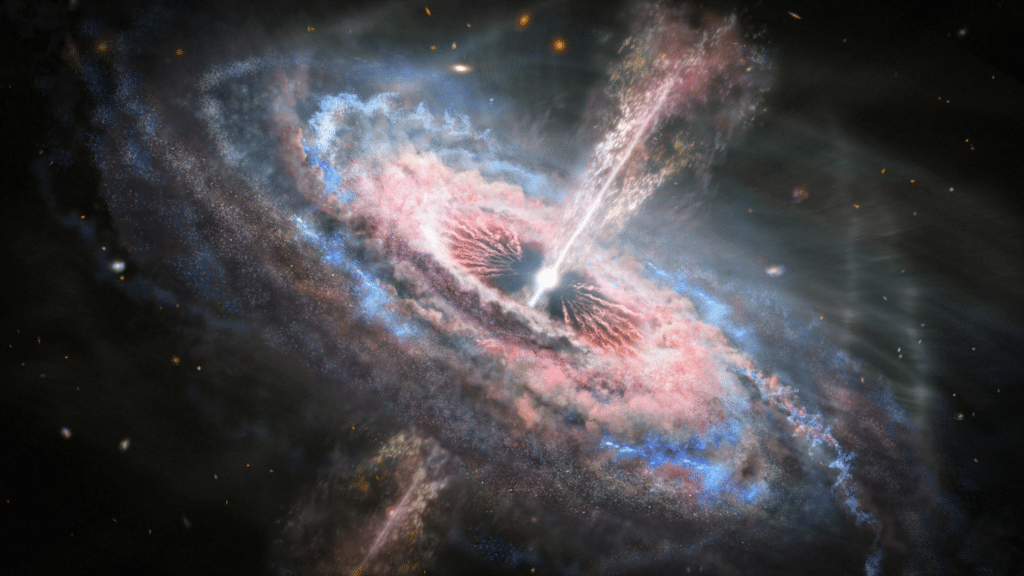Astronomers have unearthed a compelling link between the dust enshrouding supermassive black holes and the intensity of radio emissions in some of the most luminous galaxies known to man. This discovery sheds light on the cosmic lifecycle of galaxies, the colossal black holes they host, and quasars.
Spearheaded by experts from Newcastle University and Durham University in the United Kingdom, the research harnessed data from the Dark Energy Spectroscopic Instrument (DESI), an ambitious project analyzing the universe’s large-scale structure. The study focused on quasars, the exceptionally radiant hearts of distant galaxies, energized by supermassive black holes. These cosmic behemoths can possess mass millions to billions of times that of our Sun.
“It was really exciting to see the amazing quality of the DESI data and to discover thousands of these, previously rare, red quasars. I feel like this study puts lots of the puzzle pieces together in our understanding of red quasars and definitively links the dust in a quasar to its radio emission,” says Dr. Victoria Fawcett, the study’s lead from Newcastle University, in a statement. “I think this is the strongest evidence so far that red quasars are a key element in how galaxies evolve.”
But what makes a quasar red or blue? It’s the dust. Quasars are typically blue due to the high-energy disc of material swirling into their resident black holes. Yet, some quasars are red, cloaked by dust that alters their appearance. These red quasars are particularly intriguing to astronomers, promising to unlock secrets of galactic evolution.
The team’s cutting-edge approach involved “spectroscopic” measurements, analyzing light across various wavelengths, which unveiled the dust levels around quasars. More dust meant redder quasars, and intriguingly, these were the ones with stronger radio emissions.
The relationship between dust and radio emissions is telling a story of cosmic winds and monumental transformations. These winds, originating from the supermassive black holes, might be creating shocks as they collide with the surrounding dust, resulting in radio waves. Over time, these powerful outflows may clear the quasar’s environment of dust, switching red quasars to their blue counterparts.
“This reddening-radio connection is likely due to powerful outflows of gas driven away from the supermassive black hole, which slam into the surrounding dust, causing shocks and radio emission,” Dr. Fawcett explains, highlighting the dynamics at play in these distant, dusty red quasars.
Study authors note that the detected relationship between dust and radio emissions isn’t merely about the brightness or distance of these quasars. Instead, it suggests an intrinsic connection, potentially marking red quasars as a “transitional phase” in galactic evolution. This phase, dramatically termed the “blow-out” stage, could be a pivotal period where winds and outflows from supermassive black holes are purging their surroundings, setting the stage for the emergence of a blue quasar.
Despite these advances, mysteries linger, particularly around the exact processes driving the radio emissions. Are they spurred by winds from the black hole, or jets of energy? With DESI’s ongoing survey expected to uncover even more red quasars, researchers are optimistic.
“There are still many unanswered questions surrounding red quasars,” admits Dr. Fawcett. “However, with the sample of DESI red quasars continuing to grow over the next few years of the survey, I am confident that we are on the brink of fully understanding the nature of these red quasars.”
This research not only offers a window into the high-energy processes shaping galaxies but also highlights the evolving nature of cosmic understanding, reminding us that the universe is brimming with secrets, waiting to be uncovered. The study is published in the Monthly Notices of the Royal Astronomical Society.












